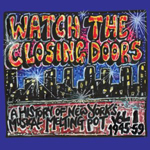|
|
 |
Dusted Reviews
Artist: V/A Album: Watch the Closing Doors: A History of New York’s Musical Melting Pot. 1: 1945 – 1960 Label: Year Zero Review date: Jul. 22, 2011 |

|
|
|
 |
Watch the Closing Doors is (or will be) a series of compilations by veteran British writer Kris Needs predicated on the theory that the Manhattan melting pot doesn’t have many ladlefuls left to serve. Needs has plotted out volumes for each of decade since the 1950s, with this edition including a good number of pre-’50s tracks for context. The notes here run to nearly 70 pages, providing biographies of the artists and Needs’s own feelings about the city. The music flows from Harlem R&B to Raymond Scott’s midtown electronic research to Greenwich Village folk, leaping from stoic classics like Mingus’s “Goodbye Pork Pie Hat” to the pig Latin horsing around of The Honeycones’ “Op.”
Needs is English, but spent some of the 1980s in New York ingesting the culture, losing a wife, struggling with a drug habit, and picking up spray-can skills that adorn this comp’s cover. When he landed, immediate neighbors included Richard Hell, Arthur Russell and Allen Ginsberg. He received treatment in the same ward that finished off Billy Holiday (represented here with her “Autumn in New York”). Decades later, he’s still smitten that he occupied the same streets and rooms as his heroes, drawing personal connections to the tracks without coming across as name-dropping. The music of the 1950s wasn’t always familiar to even him; he admits to cramming to understand the breadth of the scene, vetting a lot of the material with Suicide’s Alan Vega to get a native New Yorker’s perspective.
Some of these more objective offerings offer the most insight, with artists like Machito, Harry Belafonte and Josh White getting their due even as their subsequent influence has waned. Put in the pot with “Minnie the Moocher” and “Why Must Fools Fall in Love,” the familiar oldies seem more foreign, briefly escaping their fate as soundtrack fodder. Very little of the pop music here has an overt influence on what came next. In the 1960s, Delta blues would beat out the citified growl of Joe Turner and Big Maybelle as a rock inspiration. The rougher soul of the Mid-South, along with the teen symphonies of Spector and Gordy, would displace New York’s doo-wop sweetness. Jazz was entering its capstone stage in the popular imagination. The city’s melting pot was also a pressure cooker, calling for expertise and polish that sounded square a few years later.
Josh White, a Piedmont blues singer who ended up as one of the more outspoken folkies in the Village, is an especially interesting case. A good-looking guy, he was encouraged to play with his shirt open. But even with a sex symbol veneer, he never shied away from confronting Jim Crow. The barriers he broke — both by desegregating venues, and becoming the first million-selling black artist — help make tracks like “St. James Infirmary,” “House of the Rising Sun” and “Frankie and Johnny” into standards. But he doesn’t fit with our current conception of country blues. In listening to “Southern Exposure,” his playing is intricate and mellow. His years on Broadway are evident; every consonant is enunciated crisply. There’s nothing about the track that would be at home on Harry Smith’s anthologies, even if his style was formed among those prewar peers. Mike Seeger’s New Lost City Ramblers feel “rural” in comparison, yet it’s the work of a second-generation musicologist. The agit-prop of the Ramblers’ “How Can a Poor Man Stand Such Times and Live” is as subtle as a nine-pound hammer when considering what White was able to slip into the mainstream. White’s threatless croon was necessity for a black man delivering the words “the poll tax takes my vote” on national radio. Placing those tracks side by side creates a vortex of authenticity issues.
There are aspects of A History of New York’s Musical Melting Pot. 1 where it’s clear Needs comes from a different era than the one he’s celebrating. He writes from a viewpoint where punk was the crux of everything: Nina Simone is noted for her influence on Nick Cave, and he asserts that Ginsberg was best known during the ‘80s for his voice over on The Clash’s “Ghetto Defender.” (I’m pretty sure the Howl booklet has always had more traction on campuses than deep cuts from Combat Rock.) And there’s the whole question of why this is a series of CDs, and not a blog with YouTube embeds. He voices longing for recordings that evaded his attempts at licensing, a concern that’s never hung up the online obsessive anthologizer. But he also does something that makes sense with CD sequencing — he ends the two discs with the long, long spoken works of “Howl” and John Cage’s recitation of koans, “Indeterminacy Pt. 2,” respectively. Taking in those pieces requires effort, the kind often sabotaged by scrolling walls of RSS feeds. What a blast from the past.
By Ben Donnelly
|







